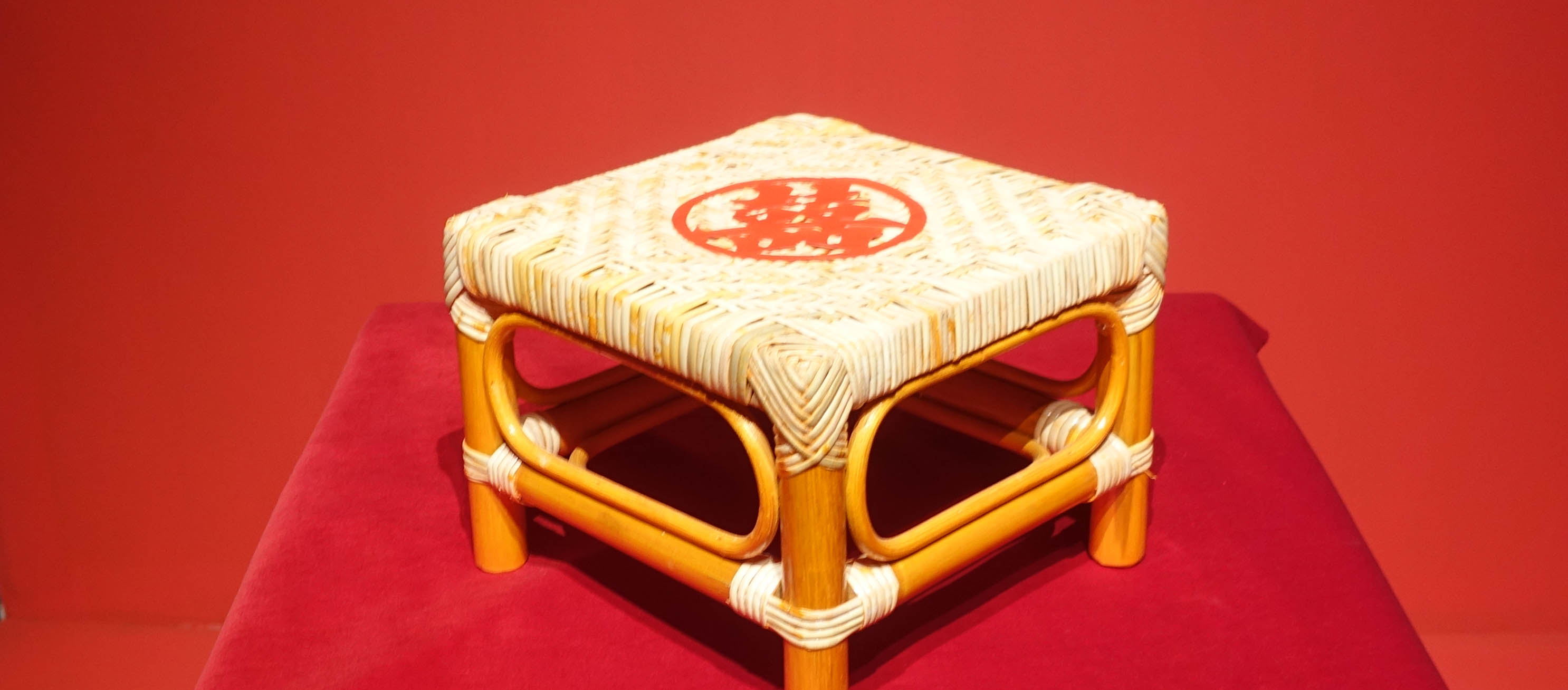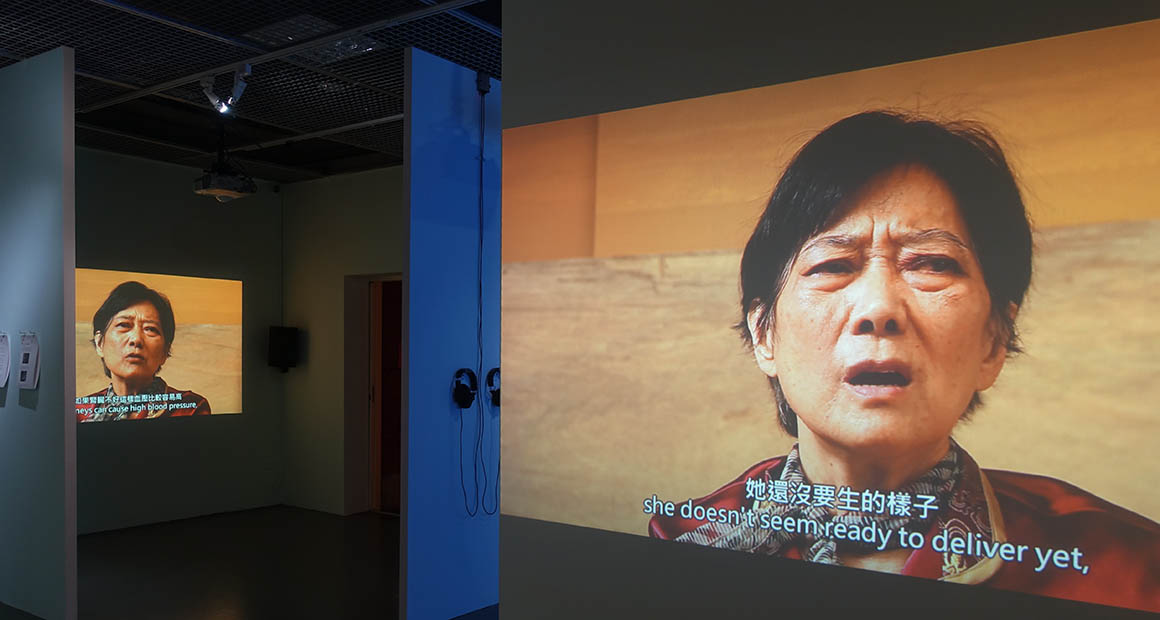

台北當代藝術館 官方網站 Museum of Contemporary Art, Taipei
Monday 星期一
10AM - 6PM



Monday 星期一
10AM - 6PM
EXHIBITIONS & EVENTS 展覽活動

2019 / 02 / 09 Sat.
2019 / 03 / 24 Sun.
10:00 - 18:00

陳建北於2016年底在臺南駐村期間,當時在構思明清府城議題時,由於身處舊城區的氛圍中,他的兒時記憶不禁被喚醒。其中對他印象最為鮮明的,莫過於家族中的耆老,對於人丁興旺與開枝散葉所寄予的關心。
生兒育女之事,在過去的那個年代,始終被認為是妻子理所當然的責任。陳建北聽聞家中的大媽流產經驗之憾及母親談論南港外婆的一生境遇,強烈感受到當時女性所承受的壓力,絕非現代人所能想像。臺灣光復後的40年代後期和50 ~ 60年代間,人們民生醫療習慣較少進出醫院或診所就診,而當時家庭普遍多子,生產顯然是生死交關之事,但因經濟因素使然,大多數人都是由產婆所接生的。助產士的人生故事因此深深吸引著陳建北。
「助產序曲」這個展覽,希望透過助產士—顏桂英女士及當時被她接生的婦女訪談開始,慢慢勾勒出那個時代關於生產、婦女社會處境及傳宗接代的重要性。
展覽走廊盡頭觀眾可見到傳統嫁妝—生子椅,入口牆面的府城地圖標示出顏女士服務的區域,也隱喻了時代的差異性。而進入展間的八部影片作品是由藝術家的探查研究,訪談顏女士及被她接生的婦女之生產經驗。透過受訪者的口述,走入當時特殊的文化背景—生產的民間禁忌、特殊的生產經驗及子嗣傳承與女性家中地位……等等議題,形成這個展覽的主結構。在展間最後的徵信活動,透過一封封關於孕育、生產時期的個人心情信件,傳遞情感給重要的人,反思現代人的親情疏離。「助產序曲」不只是探討傳統與現代,更可反推研究日本殖民時代至清朝年代易被忽略的歷史文化背景,對於生產與孕育的議題探討,於陳建北與我們自身都只是個開始。
In that day and age, childbearing and the rearing of children were presumed to be the natural duty of the wife. Recounting the anguish following his aunt’s miscarriage and his mother’s account of her own mother’s predicament whilst in Nangang, Chen Chien-Pei intensely sensed that the burden weighing upon these women was far greater than what modern society could conceive of. In the years following Taiwan’s Retrocession and between the ‘50s and ‘60s, as the general populace was still unaccustomed to hospital or clinical check-ups, and as a typical household would have borne multiple offspring, each childbirth inexorably became a desperate grapple between life and death. And as economic factors compelled most families to turn to midwives for support, the story of the midwife, of her life and her work, became a subject of deep fascination for Chen Chien-Pei.
Through a series of interviews with the midwife Yan Guai-ing and the many women she delivered, Midwife Overture gradually delineates the contours of that period—in childbirth, the social predicament of women, and the all-consuming purpose of bearing a male heir. At the end of the exhibition corridor, visitors will find placed a traditional dowry—a birthing chair; a map of Old Tainan by the entrance not only marks the territory which Mrs. Yan serviced, but also allegorizes the stark contrasts between the two eras. In the screening room, an eight-part series of the artist’s field research is showcased; firsthand accounts of the trial by ordeal that Mrs. Yan and the mothers were subjected to during each childbirth. Through their personal narratives, we foray into the cultural backdrop of their generation—proverbial taboos for expectant mothers, memorable encounters during deliveries, family bloodlines and legacies, as well as the woman’s role in the household…together these topics shape the groundwork of this exhibition. Finally, on display are personal letters solicited from the general public, each bearing heartfelt messages dedicated to their significant other on pregnancy, motherhood, and nurturing, offering a reassessment on family and intimacy in modern society. Midwife Overture not only is an exploration of tradition and the modern, but further reflects upon a segment of history easily neglected in our historical studies from the Japanese colonial period to the Qing Dynasty. For both us and Chen Chien-Pei himself, engaging in dialogue on the subject of childbirth and pregnancy is but a mere beginning.
MORE
LESS
陳建北,1955年生於臺灣臺北,自國立藝專畢業後1984年赴西班牙求學,畢業於畢爾包大學藝術學院。海外求學被排擠或申請簽證被刁難時,深刻體會到母體文化對異鄉學子的重要性。1994年學成返臺執教。陳建北早期擅長使用空間裝置、複合媒材為其創作手法,擷取象徵意符的現成物以對應空間結構而營造出具宗教氣氛、或構築成遠渺的精神境界。1997年以作品《被囚禁的靈魂》參加第47屆威尼斯雙年展臺灣館。2000年後開創影像裝置新格局,將精神層次的抽象關注轉換至具體的對象作品,如2001年作品《介面》。2011年開始以童年經驗與記憶作為靈感來源,專注於「吾鄉‧吾土」系列之創作,並於2013年在台北當代藝術館展出,透過展覽探討不同世代下生命/身分的觀點差異和社會現況,並藉以重新定義臺灣與世界的關係。
Chen Chien-Pei (b.1955) was born in Taipei, Taiwan. After graduating from National Taiwan Academy of Arts (now National Taiwan University of Arts), he pursued further study in Spain and received his MFA from the Faculty of Arts, Pais Vasco University in Bilbao, Spain. Having had experience of feeling edged out by others and difficulties in applying visas when he was studying abroad, Chen has a deep understanding of the importance of maternal culture to students in a foreign country. In 1994, Chen returned to Taiwan and started teaching. He used to make spatial installations with distinctive materials in an earlier time, and often created religious atmosphere or portrayed ethereal, spiritual realms through employing symbolic signs, objects, materials, and spatial characteristics. In 1997, his work, Imprisoned Soul, was showcased in the Taiwan Pavilion, 47th Venice Biennale. After 2000, he shifted to video installations, substantiating his spiritual, abstract concerns with concrete subjects, for example his work, Interface, created in 2001. Since 2011 onward, Chen has been creating the Home‧Land Series inspired by his childhood experiences and memories, and showcased the series in a solo exhibition at MOCA Taipei in 2013. The exhibition explored varying perspectives on life/identity issues of different generations and contemporary social condition, and through these dissimilarities, he attempted to re-define Taiwan's relation with the world.
活動名稱
活動地點
活動時間
CLOSE
ADMISSION 門票
ADMISSION 門票
CLOSE
著作權聲明
台北當代藝術館尊重他人著作權,台北當代藝術館服務條款亦明定,網友使用台北當代藝術館服務不得侵害他人之著作權,因此,台北當代藝術館呼籲使用者同樣尊重他人之著作權。如果您認為台北當代藝術館網站中之任何網頁內容或網友使用台北當代藝術館服務已侵害您的著作權,建議您利用本處理辦法提出檢舉,台北當代藝術館客服中心將儘速為您處理:
若台北當代藝術館網站中之任何網頁內容或網友使用台北當代藝術館服務已侵害您的著作權,請您填寫:「 著作權侵權通知書」,且依該通知書所載提供下列資料及聲明,並以傳真的方式通知台北當代藝術館:
1、著作權人之簽名、或著作權人之代理人之簽名、相關權利證明文件及著作權之內容,例如:已發行書籍之封面及相關頁面、發表於網路中之網頁內容列印紙本及其網址。
2、侵害著作權之內容所在的網頁及網址。
3、您的聯絡地址、電話等資料。
4、書面聲明您確信該網頁內容的使用行為是未經過著作權人、其代理人或法律的授權。
5、書面聲明您於通知書所載相關資料均為真實,且您是著作權人或著作權人之代理人而為上開聲明。
若台北當代藝術館網站中之任何網頁內容或網友使用台北當代藝術館服務已侵害您的著作權,請您填寫:「 著作權侵權通知書」,且依該通知書所載提供下列資料及聲明,並以傳真的方式通知台北當代藝術館:
1、著作權人之簽名、或著作權人之代理人之簽名、相關權利證明文件及著作權之內容,例如:已發行書籍之封面及相關頁面、發表於網路中之網頁內容列印紙本及其網址。
2、侵害著作權之內容所在的網頁及網址。
3、您的聯絡地址、電話等資料。
4、書面聲明您確信該網頁內容的使用行為是未經過著作權人、其代理人或法律的授權。
5、書面聲明您於通知書所載相關資料均為真實,且您是著作權人或著作權人之代理人而為上開聲明。
隱私權保護政策
台北當代藝術館非常重視用戶的隱私權,因此制訂了隱私權保護政策。請你細讀以下有關隱私權保護政策的內容。
隱私權保護政策的適用範圍
1、隱私權保護政策內容,包括台北當代藝術館如何處理在用戶使用網站服務時收集到的身份識別資料,也包括台北當代藝術館如何處理在商業伙伴與台北當代藝術館合作時分享的任何身份識別資料。
2、隱私權保護政策不適用於台北當代藝術館以外的公司,也不適用於非台北當代藝術館所僱用或管理的人員。
3、台北當代藝術館在你註冊台北當代藝術館帳號、使用台北當代藝術館的產品或服務、瀏覽台北當代藝術館網頁、參加宣傳活動或贈獎遊戲時,台北當代藝術館會收集你的個人識別資料。台北當代藝術館也可以從商業夥伴處取得個人資料。
4、當你在台北當代藝術館註冊時,我們會問及你的姓名、電子郵件地址、出生日期、性別、職位、行業及個人興趣等資料。你在台北當代藝術館註冊成功,並登入使用我們的服務後,我們就會認識你。
5、台北當代藝術館也自動接收並紀錄你瀏覽器上的伺服器數值,包括互聯網協定位址 (IP Address) 、台北當代藝術館cookie中的資料及你要求取用的網頁紀錄。
6、台北當代藝術館會使用資料作以下用途:改進為你提供的廣告及網頁內容、完成你對某項產品的要求及通知你特別活動或新產品。
7、台北當代藝術館不會向任何人出售或出借你的個人識別資料。
8、在以下的情況下,台北當代藝術館會向政府機關、其他人士或公司提供你的個人識別資料:與其他人士或公司共用資料前取得你的同意。
9、需要與其他人士或公司共用你的資料,才能夠提供你要求的產品或服務。
10、向代表台北當代藝術館提供服務或產品的公司提供資料,以便向你提供產品或服務 (若我們沒有事先通知你,這些公司均無權使用我們提供的個人資料,作提供產品或服務以外的其他用途)。
11、應遵守法令或政府機關的要求。
12、我們發覺你在網站上的行為違反 台北當代藝術館服務條款或產品、服務的特定使用指南。
13、其他依「個人資料保護法」或政府法令應公開之資料。
14、為了保護使用者個人隱私, 我們無法為您查詢其他使用者的帳號資料,請您見諒!若您有相關法律上問題需查閱他人資料時,請務必向警政單位提出告訴,我們將全力配合警政單位調查並提供所有相關資料,以協助調查及破案!
15、 台北當代藝術館會到你的電腦設定並取用台北當代藝術館cookie。
16、台北當代藝術館容許在我們網頁上擺放廣告的廠商到你的電腦設定並取用cookie。其他公司將根據其自訂的隱私權保護政策,而並非本政策使用其cookie。其他廣告商或公司不能提取台北當代藝術館的cookie。
17、當台北當代藝術館進行與其產品及服務有關的工作時,會使用 web beacons 進入我們的網站網絡,提取cookie使用。
18、台北當代藝術館賦予你在任何時候修改個人台北當代藝術館帳號資料及偏好設定的權力,包括接受台北當代藝術館通知你特別活動或新產品的決定權。